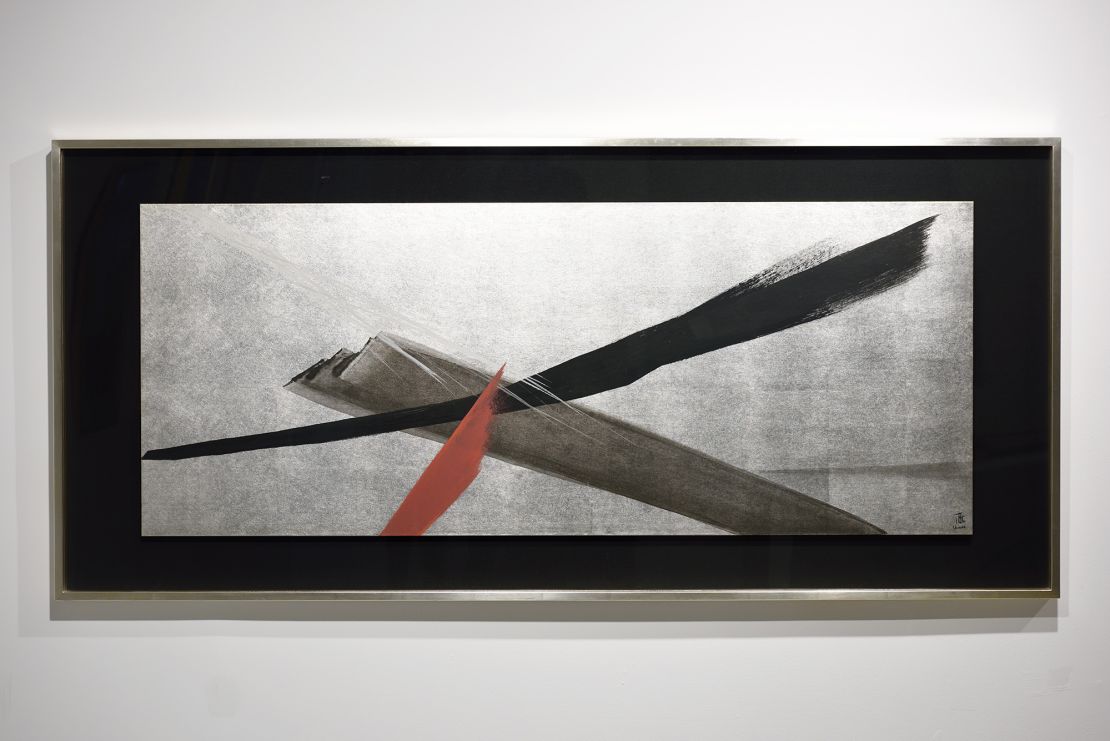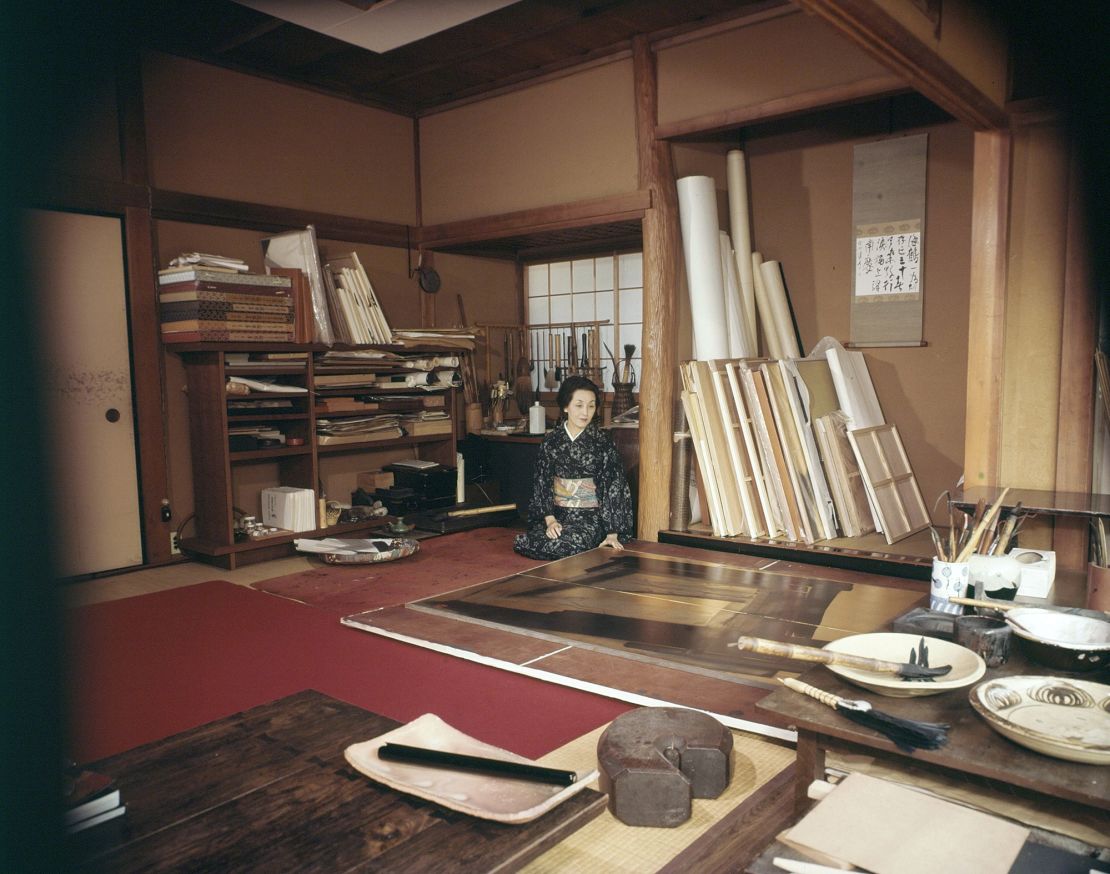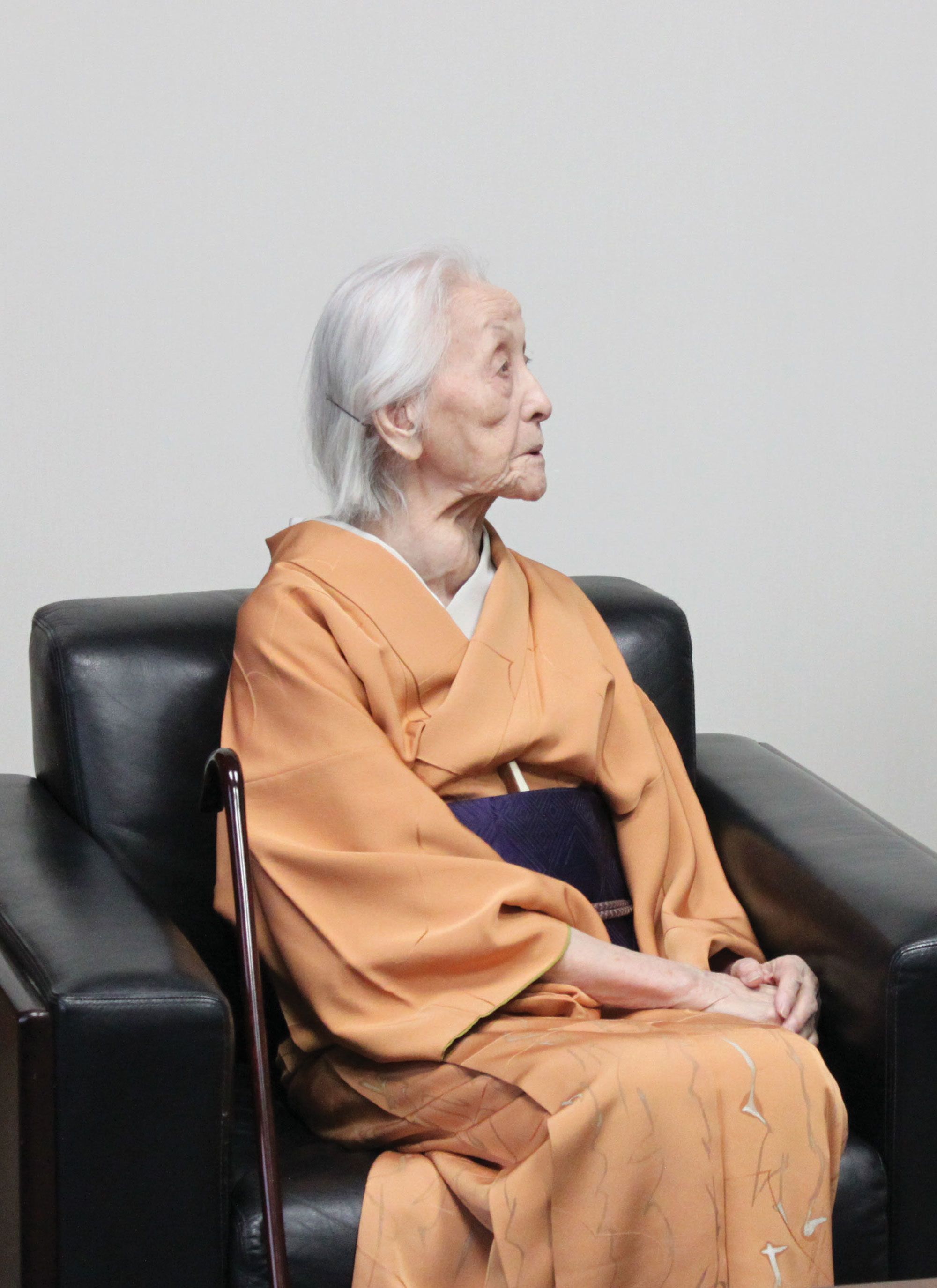Celebrated artist Toko Shinoda, who combined Abstract Expressionism with the traditions of Japanese calligraphy, has died at the age of 107.
She passed away from natural causes at a Tokyo hospital on Monday, her niece Soko confirmed via a statement from The Tolman Collection gallery, which represented the artist.
Born in 1913 in the Manchurian city of Dalian, now part of northeast China, Shinoda moved to Japan at a young age. There she showed an early aptitude for calligraphy, which she first learned from her father, holding her first solo exhibition in Tokyo in 1936.
After World War II, however, she began experimenting with techniques outside the confines of traditional calligraphy. Using her preferred medium, sumi ink, Shinoda’s work became increasingly abstract, giving new and unexpected forms to Japan’s kanji script.

But it was her 1956 move to the United States, where she settled for the next two years, that served as a stylistic turning point. Immersing herself in New York’s art scene, Shinoda interacted with some of Abstract Expressionism’s leading figures, including Jackson Pollock and Mark Rothko, and was seemingly influenced by the immediacy of their work.
In this same period, her creations began appearing at exhibitions in American and European cities, including Boston, Chicago, Paris and Rome. And though she returned to Japan in the late 1950s, Shinoda’s work would continue to be shown in the West and was later collected by major museums including the Guggenheim and MoMA in New York and The British Museum in London.
While she brought much of America’s abstract tradition home with her, Shinoda retained an elegance from her calligraphic roots. She also, often, eschewed the use of dramatic colors – so liberally employed by contemporaries like Pollock – instead creating dynamism and depth using different concentrations of ink and brushstrokes of varying intensity.

In the 1960s, she began working with lithographs, media widely used by her avant garde counterparts in the West. And in a career spanning over eight decades, Shinoda also completed many murals and large-scale works for public buildings. One of her best known creations is the 95-foot-long mural, stretched across three panels, that was installed at the sacred Zojoji Temple in Tokyo in 1974.
Yet, it was her work with sumi ink on paper that continued to dominate her output. In 1992, Shinoda was the subject of a major retrospective at the Museum of Fine Arts in Gifu, and she remained active in her later years, exhibiting work in Tokyo as recently as 2019.
In 2017, then aged 104, she told the Japan Times that she “never thought that I would live to be this old,” adding: “to think that I am still able to produce works that delight art lovers is in itself rewarding.”
“I don’t paint on any regular schedule, just when the mood strikes me,” she told the paper. “Sometimes new forms that I had never thought of until recently seem to come to mind and I try my best to put them down as I see them.”
The Tolman Collection owner Allison Tolman, Shinoda’s long-time friend and gallerist, described her as an “incredibly magnetic, interesting and curious person.”
“We always had a wonderful bond,” Tolman added in a phone interview. “I feel so privileged to have known her.”
Shinoda would have turned 108 this month.
Chie Kobayashi contributed to this report.

